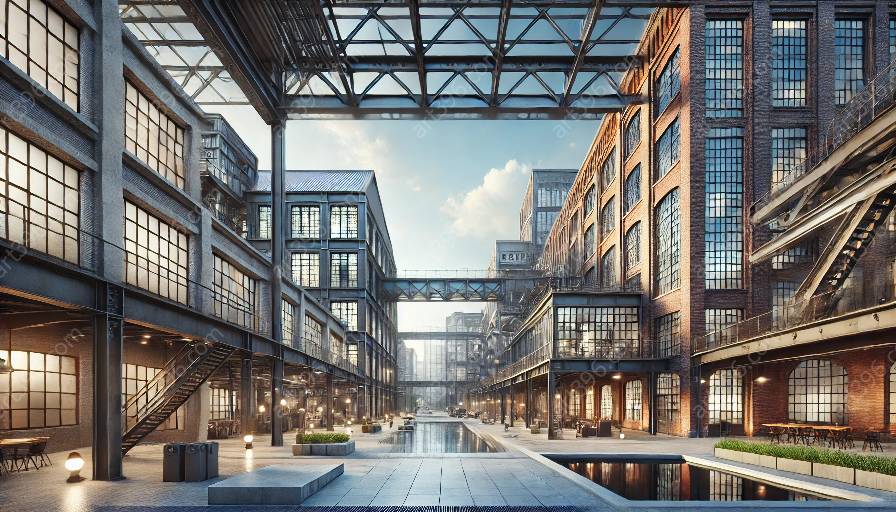In the dynamic landscape of industrial architecture, adaptation to changing needs plays a crucial role in shaping the modern industrial infrastructure. Industrial architecture relies on innovative and flexible design solutions to accommodate transformations in technology, industry demands, and societal needs. Understanding the challenges and opportunities of this adaptation is essential in creating sustainable and functional industrial spaces that meet contemporary requirements.
The Evolution of Industrial Architecture
Industrial architecture has undergone significant transformations to align with the evolving industrial, technological, and environmental landscapes. The historical roots of industrial architecture are deeply embedded in the industrial revolution, characterized by large-scale factories and manufacturing facilities designed to optimize production processes. As industries expanded and diversified, the architectural framework had to adapt to accommodate new technologies, materials, and production methods.
The Challenges of Adaptation
The adaptation of industrial architecture to changing needs presents numerous challenges, ranging from maintaining historical significance to integrating sustainable design practices. Preserving the heritage and historical context of industrial structures while upgrading them to meet modern needs requires a delicate balance between conservation and innovation. Additionally, the incorporation of sustainable and energy-efficient features poses technical and economic challenges that demand creative and cost-effective solutions.
Opportunities for Innovation
Amidst these challenges, the adaptation of industrial architecture also offers exciting opportunities for innovation and creative expression. Designers and architects have the chance to leverage advanced construction methods, digital technologies, and materials to revitalize industrial structures and repurpose them for contemporary use. The adaptive reuse of industrial spaces as mixed-use developments, cultural venues, or sustainable facilities reflects the potential for transformative, multi-functional spaces that contribute to urban revitalization and community development.
Sustainability in Adaptation
Sustainability is a driving force in the adaptation of industrial architecture. Incorporating sustainable design principles, such as adaptive reuse, natural lighting, and renewable energy systems, not only enhances the environmental performance of industrial buildings but also aligns them with modern sustainability standards and regulations. The emphasis on green building practices and eco-friendly technologies promotes responsible and ethical development in the industrial architecture landscape.
The Integration of Technology
Advancements in technology have a profound impact on the adaptation of industrial architecture. The integration of smart building systems, IoT (Internet of Things) connectivity, and digital manufacturing tools enables industrial facilities to optimize energy usage, streamline production processes, and enhance operational efficiency. Embracing technological innovations is fundamental in creating flexible and adaptable industrial spaces that can respond to evolving industry requirements.
Influence on Modern Surroundings
The adaptation of industrial architecture transcends individual structures and influences the broader urban and industrial landscapes. Revitalized industrial sites contribute to the cultural and economic vitality of their surrounding communities, fostering a sense of place and identity. Furthermore, the adaptive reuse of industrial facilities reduces urban sprawl and supports sustainable urban development by repurposing existing infrastructure rather than creating new construction.
Future Trends
The future of industrial architecture adaptation is shaped by emerging trends in technology, sustainability, and urban planning. The integration of circular economy principles, the utilization of green infrastructure, and the convergence of digital and physical environments are anticipated to redefine the approach to industrial architecture adaptation. Embracing a holistic and forward-thinking approach to adaptation will be instrumental in creating resilient and responsive industrial spaces for the future.
Conclusion
Adapting industrial architecture to changing needs is a dynamic and multi-faceted process that demands a blend of historical preservation, technological innovation, and sustainable development. The evolution of industrial architecture presents a wealth of opportunities to repurpose, reimagine, and revitalize industrial structures, shaping modern surroundings and contributing to the sustainable and inclusive growth of communities.





























































